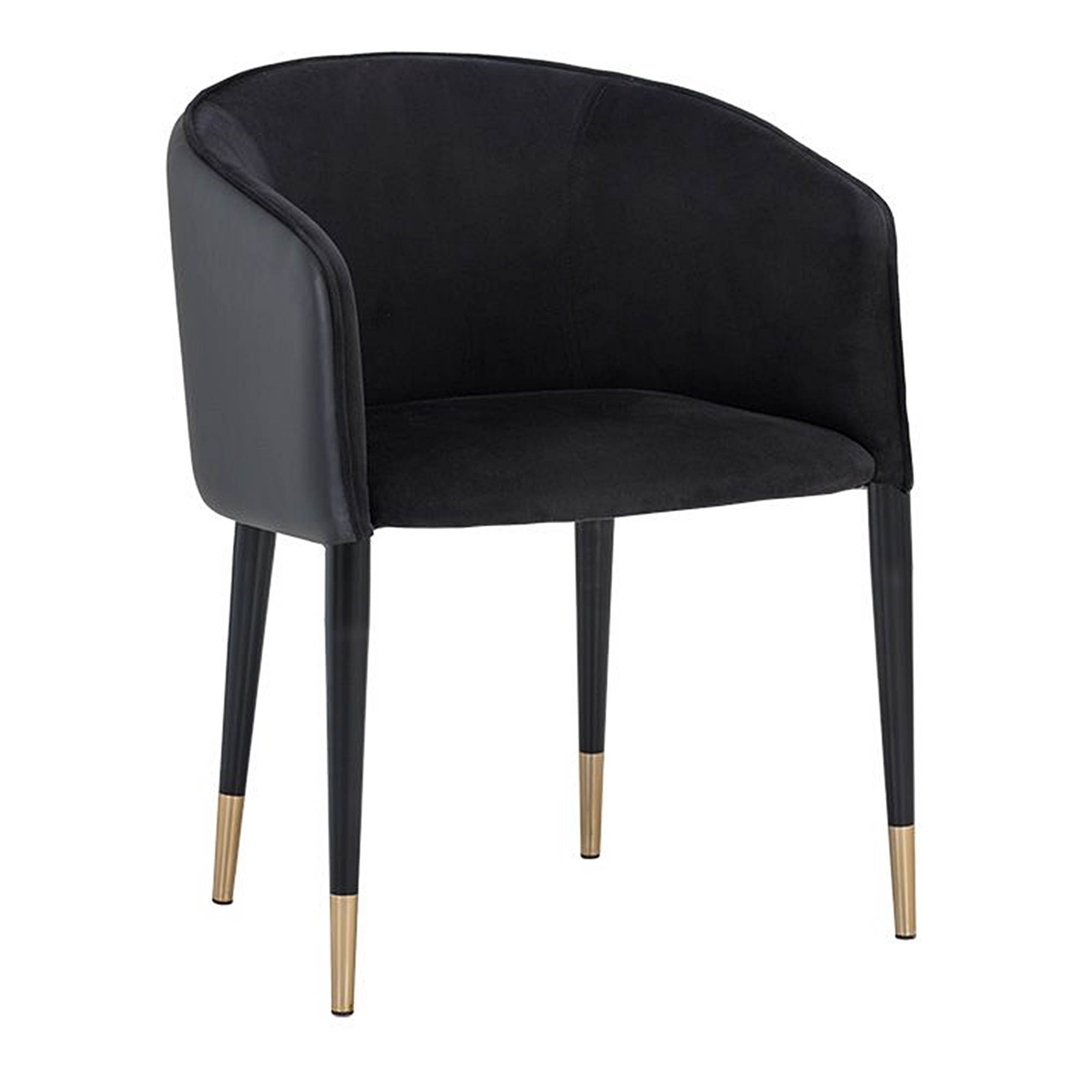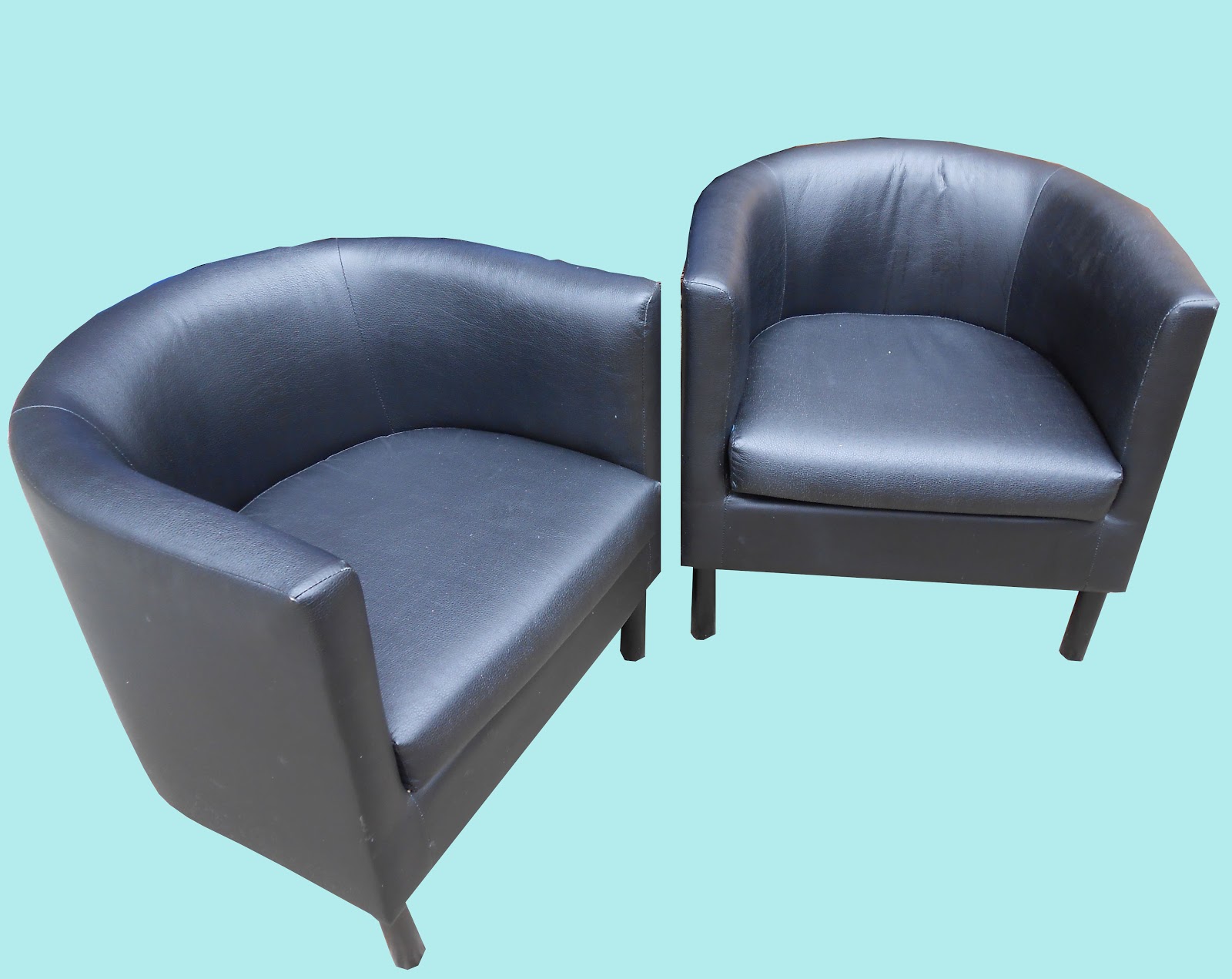Design & Aesthetics of Black Leather Bucket Chairs

Black leather bucket chairs offer a unique blend of comfort and style, seamlessly integrating into a variety of interior design schemes. Their distinctive silhouette and luxurious material contribute to a sophisticated and often dramatic aesthetic, making them a popular choice for both residential and commercial spaces. The versatility of the design allows for customization, resulting in chairs that range from sleek and minimalist to bold and statement-making.
Design Elements and Material Variations
The design of black leather bucket chairs varies considerably, impacting their overall look and feel. The following table highlights key differences in design elements across different styles and materials.
| Armrests | Base Type | Silhouette | Leather Type |
|---|---|---|---|
| Integrated, padded armrests | Swivel base with five legs | Rounded, enveloping | Full-grain leather |
| Minimalist, sculpted armrests | Four-legged base | Sleek, streamlined | Top-grain leather |
| No armrests | Fixed base | Simple, compact | Bonded leather |
| Wide, wing-like armrests | Caster base | Oversized, luxurious | Genuine leather with distressed finish |
Visual Appeal in Different Interior Design Styles
Black leather bucket chairs effortlessly adapt to diverse interior design styles. In mid-century modern settings, their clean lines and simple silhouettes complement the era’s emphasis on functionality and understated elegance. The black leather adds a touch of sophistication without overwhelming the space. Contemporary interiors benefit from the chair’s sleek form, often acting as a focal point, especially when paired with metallic accents or brightly colored textiles. In industrial-style spaces, the chair’s robust construction and leather upholstery contribute to a raw, yet refined aesthetic, harmonizing with exposed brick and metal elements. The black leather provides a grounding element, balancing the industrial aesthetic’s often stark features.
Tactile Experience and Ergonomics
Sitting in a black leather bucket chair is a sensory experience. The cool, smooth texture of the leather against the skin is immediately noticeable, offering a luxurious contrast to softer upholstery. Depending on the type of leather, the surface can range from supple and yielding to firm and structured. The chair’s enveloping silhouette cradles the body, providing excellent lumbar support and promoting a relaxed posture. The ergonomic design, often featuring a slightly reclined seat and contoured backrest, contributes to long-lasting comfort, even during extended periods of sitting. The quality of the leather, padding, and overall construction significantly impact the overall comfort level, making it a truly personalized experience.
Manufacturing & Materials of Black Leather Bucket Chairs

Creating a black leather bucket chair involves a complex process, blending craftsmanship with modern manufacturing techniques. The final product’s quality and longevity depend heavily on the materials chosen and the precision of each step in the production process. This section details the journey from initial design to the finished chair, highlighting the key materials involved.
Black leather bucket chair – The manufacturing process is a fascinating blend of old-world craftsmanship and modern efficiency. Think of it as a carefully orchestrated dance between skilled hands and powerful machinery.
Manufacturing Process of a Black Leather Bucket Chair
The creation of a black leather bucket chair is a multi-stage process requiring skilled labor and specialized equipment. Each step contributes to the chair’s final form and function.
- Design and Prototyping: The initial design phase involves creating detailed blueprints and 3D models, often using CAD software, to ensure structural integrity and aesthetic appeal. Prototypes are then built and tested for comfort and durability.
- Frame Construction: The chair’s frame is typically constructed from either hardwood (like oak or beech) or steel. Wood frames offer a classic, warm feel, while steel frames provide greater strength and durability. The chosen material is cut, shaped, and welded or joined using specialized techniques.
- Padding and Upholstery Preparation: High-density foam is cut and shaped to fit the frame, providing the chair’s cushioning. This foam is then covered with a layer of batting or other soft material to create a smooth surface for the leather.
- Leather Selection and Cutting: The type of leather (full-grain, top-grain, or bonded) is chosen based on budget and desired quality. Large sheets of leather are carefully measured and cut to precisely fit the chair’s design, minimizing waste.
- Leather Stitching and Assembly: Skilled upholsterers carefully stitch the leather onto the padded frame, using specialized sewing machines and hand-stitching techniques where necessary. This requires precision to ensure a clean, professional finish.
- Final Assembly and Quality Control: Once the leather is attached, the chair’s base (whether wood, metal, or plastic) is attached. A rigorous quality control process ensures that each chair meets the required standards of durability and comfort before packaging.
Leather Types Used in Bucket Chair Production, Black leather bucket chair
The type of leather significantly impacts the chair’s quality, appearance, and price. Understanding the differences is crucial for making an informed purchase.
| Leather Type | Durability | Appearance | Cost |
|---|---|---|---|
| Full-Grain Leather | Highest; natural markings add character and increase strength. | Unique, natural appearance with visible grain and markings. Develops a rich patina over time. | Highest |
| Top-Grain Leather | High; surface imperfections are sanded and buffed. | Smooth, consistent appearance; may lack the character of full-grain leather. | Medium |
| Bonded Leather | Lowest; leather scraps are bonded together with polyurethane. | Uniform appearance, but can feel less luxurious and less durable. | Lowest |
Additional Materials Used in Black Leather Bucket Chair Construction
Beyond leather, several other materials contribute to the chair’s overall structure and design. The choice of these materials influences both the chair’s aesthetics and its functionality.
- Wood: Hardwoods like oak or beech are frequently used for the frame, offering strength, durability, and a classic aesthetic. They can be stained or finished to complement the black leather.
- Metal: Steel is a popular choice for chair bases and frames, providing exceptional strength and stability. It can be powder-coated for durability and a variety of finishes.
- Plastic: Plastics, particularly high-impact polymers, are sometimes used for chair bases, offering a cost-effective and lightweight alternative to wood or metal. They can be designed for a variety of aesthetic styles.
- Foam: High-density foam provides the cushioning and comfort of the chair. The density and type of foam used influence the chair’s firmness and longevity.
- Batting: A layer of batting is often placed between the foam and the leather to create a smooth surface and enhance the overall comfort of the chair.
